FREE Standard Shipping On All Orders $100 or More!*
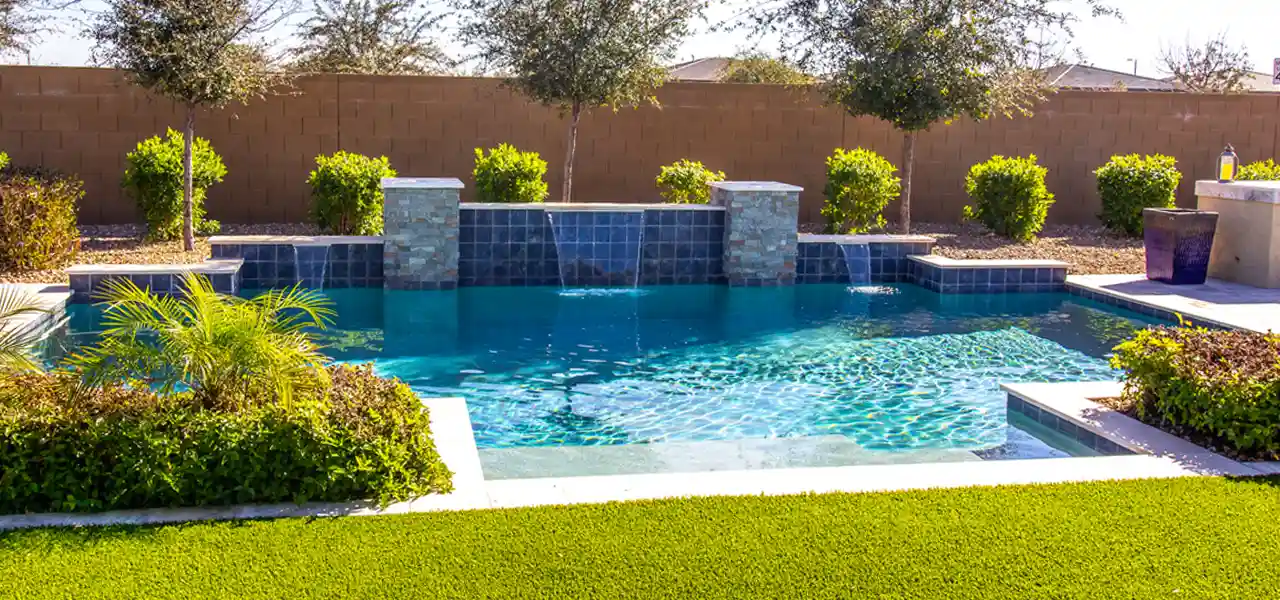
Hard Pool Water: Removing Calcium Scale
Many parts of the United States have hard water which can leave calcium deposits at the waterline, or calcium crystals or thin sheets of calcium scale on the pool walls and floor.
After defining the cause of pool scale and ways to prevent scale problems in pools, we will cover how to remove scale from vinyl, fiberglass, and concrete pools.
Problems with Pool Water Hardness
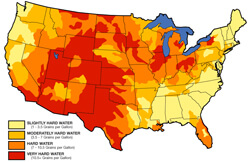
In many parts of the country, tap water with hardness levels of 400-800 ppm is not uncommon. Elevated calcium levels, particularly when coupled with rising pH, can result in the formation of whitish scale or crystalline deposits on pool surfaces, including at the water line, inside pipes, or throughout the pool.
High water hardness may cause cloudiness or calcium stains as hard minerals combine with dirt and oils, precipitating out of solution.
Controlling Calcium Hardness in Pools
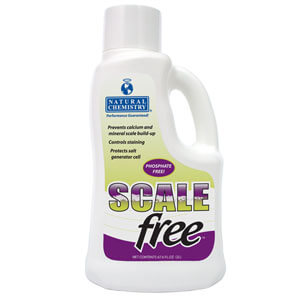
As opposed to removing calcium in pools, many pool owners opt to control the mineral build-up in pools. The primary method of control is to keep well-balanced pH and alkalinity levels. With a proper pH of 7.2-7.4 and Total Alkalinity of 80-100 ppm, high levels of calcium rarely become problematic.
Secondly, using a sequestering agent like Scale Free or Stain Away, will lock-up minerals (sequester) with a strong chemical bond, that will keep calcium from precipitating out of solution, to form scale or visibly cloud the water.
Avoiding the use of calcium-based sanitizers, such as Calcium Hypochlorite, is also recommended as a way to reduce calcium build-up. Lithium, Dichlor or non-chlorine shock can be used as alternative pool shocks, that won't add calcium to the pool.
Reducing Calcium Hardness in Pools
To decrease pool hardness levels, explore methods for lowering calcium levels if controlling hardness becomes challenging.
Drain part of the pool, and refill with softened or low-calcium water from a home system or trucked-in. Captured rain water, which has 0 ppm of calcium hardness, has also been used by some as a means to reduce calcium levels. But there are other methods.
Reverse Osmosis Filtration
Amid water crises and droughts in the south and west, pool and spa owners often face restrictions on draining their pools. This rules out the Dilution Method for lowering calcium hardness. Innovative entrepreneurs have answered the call by operating mobile pool filtration units. Using huge truck-mounted reverse osmosis filters and water softening agents along with pH control, they can pump your entire pool through the truck a few times. The result is fresh and balanced pool water, with calcium hardness removed to an appropriate level.
Precipitate and Floc
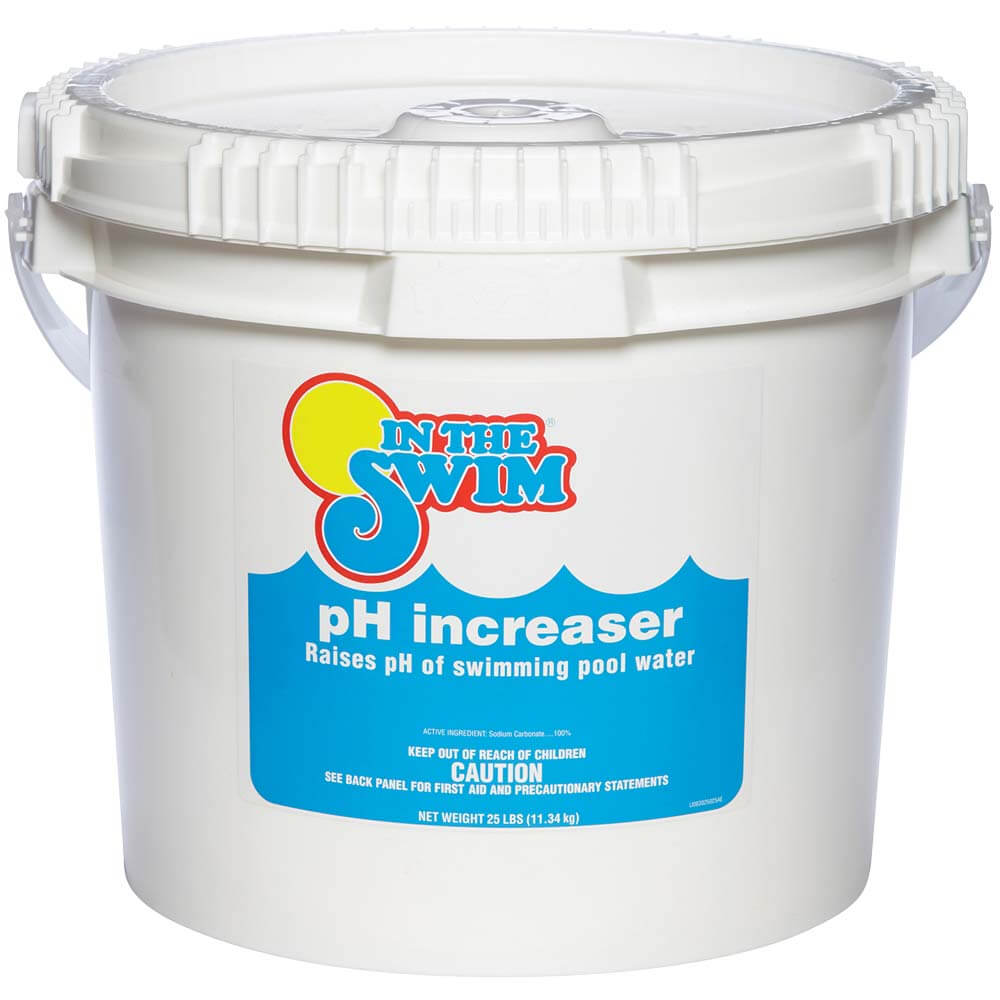
There are still some old pool guys that insist on this method, but it can be risky. The idea is to carefully raise the pH with sodium carbonate or soda ash, to a point above 8.2, or off the scale. When conditions are right, the excess calcium in the water will begin to precipitate and visibly cloud the pool, turning it milky white. Then, using a flocculent like Aluminum Sulfate or PhosFloc, you drop all of the suspended particles to the floor, and vacuum it out to waste. Then lower the pH level back to around 7.4, and check your Alkalinity. Calcium Hardness can be lowered by dramatic amounts with this method, but you risk staining or calcium deposits on pool surfaces.
Cal Treat
Cal Treat is a product produced by United Chemical. It uses a form of Dry Acid to remove light scaling and reduce calcium hardness levels without draining, according to the manufacturer. Use one bottle per 15,000 gallons, to reduce calcium hardness below 400 ppm. Actual ingredients for the formula are a closely guarded secret, but some claim that it may have a form of phosphates. Reviews are mixed, for some people it seems to work well, and for others, the results were less than expected. Your mileage may vary.
Zeolite Filter Sand

If you have a sand filter, you can replace regular pool filter sand with ZeoLite pool filter sand, which has the ability to trap the very tiny particles of calcium carbonate. It does this not by filtering out the particles, but by ion exchange. Calcium and magnesium ions are exchanged for sodium ions in the zeolite sand bed, with softens the water. The trapped calcium hardness is then simply backwashed out of the pool filter. Zeolite filter sand needs to have the ions refreshed after a few years, flushing it with a strong sodium solution, a Zeo Filter cleaner will restore it's ionic charge.
Poolside Water Softening
Home water softening units can be set up next to the pool. Using a small pool pump or submersible pump, you can circulate the pool water through water softening filters that utilize sodium and ion exchange to reduce calcium levels. After the water is pumped through the water softener, a discharge hose pumps it back into the pool. A system large enough to handle a pool might set you back $500 or so. If your home already has a water softening unit, the outdoor spigots may not be connected to the system. Consider using the utility sink or laundry room sink for a more effective way to fill or refill the pool.
What Causes Scale in Pools?
Calcium carbonate scale can form along the waterline of the pool as evaporation increases during the summer. Scale itself is a white translucent color, but is often mixed with dirt and algae to appear darker.
Calcium crystals may appear as nodules on the pool surface, ladders, and light rings, or as crusty deposits in corners. Minerals like calcium commonly form 'sheets' of scale, covering the entire pool surface in a thin layer.
The most common cause of calcium scale in pools is the result of high calcium hardness, over 400 ppm, yet is triggered by high Alkalinity, high pH and high water temperatures. Some will tell you to drain the pool if over 400 ppm, but not necessarily!
The best way to control for the various elements leading to pool scaling is to perform a regular test known as the Langelier Saturation Index, or LSI for short. An LSI test determines a pool's preponderance for scaling or etching. A pool is considered to have a balanced LSI when results are -0.3 to +0.3. Test results below -0.3 indicate a prevalence toward corrosion - and above +0.3 and your water is 'scale-forming'.
The math is a bit complicated to calculate the LSI, but you can use the Pentair LSI Tool - just plug in your water test levels and it crunches the numbers for you! The tool is then used to see the effect of adjusting chemical levels.
How to Prevent Calcium Scale
Calcium scale often results from water chemistry interactions, preventable or circumvented with various prevention methods.
- Use a sequestering agent to keep calcium locked up in solution, so it can't precipitate into scaly deposits. Chemicals such as Stain Away or Scale Free sequester metals and minerals. But, only if you apply the regular maintenance doses every week or two.
- Avoid calcium hypochlorite shock, which adds calcium to the pool. Use a non-chlorine oxidizer, or di-chlor pool shock.
- Lower your pH and Alkalinity on the low end of the scale; a pH of 7.2-7.4 and Alkalinity of 80-90 ppm. High pH and Alkalinity create ideal scaling conditions.
- Compute your LSI, a formula that computes your water's propensity to scale. Negative results below 0.0 are best to avoid scaling. Pentair LSI calculator does the math for you.
- Use a clarifier to seek out calcium particles and clump them together so that your pool filter can remove.
- Brush the pool frequently to eliminate fresh scale, and vacuum or use the pool cleaner multiple times weekly to clear calcium dust and dirt.
How to Remove Calcium Scale
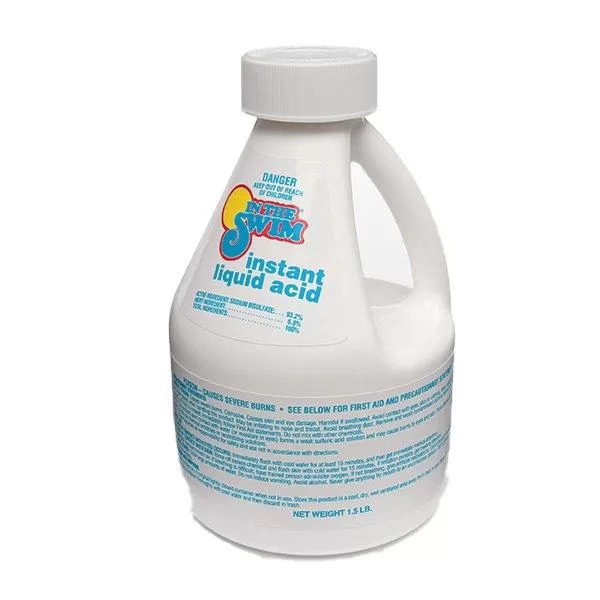
Calcium Scale can be removed with muriatic acid, or dry acid dissolved in water. A sponge works well for small areas or a flower watering can for larger areas. Don your lab glasses and gloves for acid removal of tile scale. It will fizz and bubble and emit noxious fumes as it dissolves the scale. Acid Magic or Instant Liquid Acid or even pH Decreaser can also be used as a safer acid to remove scale. Do not use household cleaners to remove pool scale, which add chemicals that don't belong in your pool.
For swimming pools, the range of acceptable hardness levels is 200-400 ppm, although many suggest a tighter range of 180-220 ppm for plaster pools and 150-250 ppm for vinyl pools.
What about Efflorescence?
Efflorescence, a pool scale variant, arises from moisture in raised rock walls or beneath the pool coping stone, not the pool water. It can be seen coming out of mortar joints between stones on a raised rock wall, or can drip down onto pool perimeter tile, flowing from the mortar bed beneath pool coping stones.
Efflorescence can be slowed by using Clear Sealer on rock or brick faces, and making sure that pool caulking is maintained to keep water out of the expansion joint. For raised rock walls, applying a bitumen or similar waterproofing on the backside of the wall can be used to block the moisture seeping through the wall.
Calcium Deposits on Tile
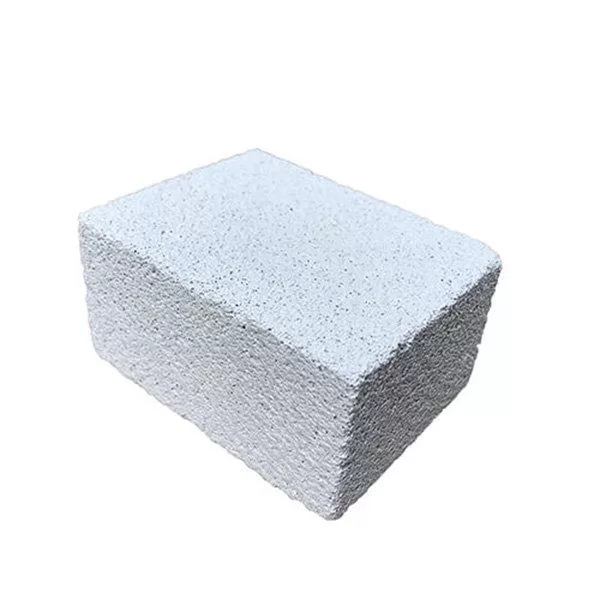
Lower the water level to the bottom of the tile and use a putty knife or similar tool to help knock off the heavy stuff and break through crusty outer layers. Use Acid Magic or Instant Liquid Acid and apply with a thick brush, pour with a flower watering can, or spray from a spray bottle. Rinse with water after 1 minute; reapply if needed.
Use a pumice stone to remove scale deposits from pool tile with light scrubbing. A nylon bristle wheel or nylon brush cup on a (cordless) drill can be useful and safe to use, pumice wheels are also available. Avoid steel bristle cups and wheels to prevent damage to tiles or formation of rust spots on your pool floor.
Wet-Dry sandpaper can also be used for light scale on pool tile. Or, you can hire a local bead blasting service to come out and professionally remove the calcium on pool tiles. Many are now using magnesium sulfate, an inorganic salt that is less aggressive than bead or sand blasting.
Calcium Deposits on Plaster
White plaster pools often have unnoticed widespread calcium deposits due to their already white surfaces. Black or Grey plaster pools develop the same hazy calcium films but are quite noticeable. Darker colors can be restored with acid washing.
To remove nodules or crystals from the surface, you can start with a pumice stone, and see if you can manage to do the entire pool, sanding off the rough calcium bits. The pool could also be drained, to acid wash the surfaces, or possibly just pressure wash the pool. Small trouble areas can be smoothed with wet/dry sandpaper or a nylon wheel on a drill.
Remove Efflorescence on Pool Tile and Stone
Like calcium scale from pool water, efflorescence is calcium lime scale from grout between tiles or stones in a wall or water feature.

To remove tile scale on pools, first scrape off the heavy deposits with a small putty knife, then use a flower watering can to pour of Acid Magic or Instant Liquid Acid, full strength on the front lip of the coping, to run over the tile. Scrub the tile with a stiff brush if possible, then rinse off with a hose within 60 seconds. Repeat if needed, then raise the pool water pH and Alkalinity, now lower from the acid.
Moisture emerging behind tiles or stones through grout or mortar joints brings calcium, causing the issue. The same process that creates stalagmites.
Sometimes the moisture comes from the pool as shown below. Sealers can be used on the tile to provide an invisible barrier. To prevent efflorescence on larger stone or brick walls above water, consider sealing or redirecting water sources behind the wall.
Removing Scale on Vinyl Liners
While the slick vinyl liner surface minimizes calcium scale, deposits may occur when conditions permit.
Contrary to metal stains on liners, mineral scale is tactile, feeling rough and 'scaly' to the touch on your hands and feet. In severe cases, it can be rough, causing swimsuits to snag and discomfort for children with 'pool toe.'
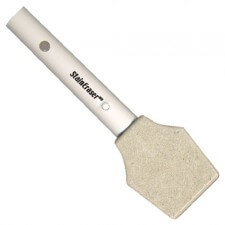
Remove vinyl pool scale carefully to prevent damage or a worsened appearance compared to other pool types. The Stain Eraser for vinyl pools is tough enough for stains and scale, and works great for small scale problems.
Lower the water level, spray white vinegar (with a few drops of dish soap) on vinyl pool waterline scale. Spray a few feet, then scrub the surface with a textured sponge or scrubber, then rinse off. Most visible scale will need an acid stronger than vinegar, however. Mix 4-8 oz. of Acid Magic or Instant Liquid Acid with water in a spray bottle, then repeat. Strong acid can remove tile patterns from your liner, so test in small areas and gradually increase the strength.
For all-over scale in a vinyl pool, an accepted treatment is to:
- Add a full dose of Stain Away or Scale Free to lock-up calcium scale.
- Lower the pH level to 6.5 for two days*, brushing the pool 2-3x per day.
- Return pH level to 7.4-7.6; continue with maintenance doses of Stain Away.
Controlling Pool Scale
Once you remove pool scale, how do you prevent it from coming back?
- Maintaining water balance to avoid over-saturation, using the LSI calculator
- Regular use of Scale Free, Stain Away or other high quality sequestering agent
- Use a fill-water filter like the Pleatco Pre-Filter, when topping off the pool
- Brush your pool regularly with a good pool brush in good condition
Sequestering agents keep calcium and carbonates in solution, preventing them from precipitating and causing issues. Replenish sequestering agents every week or two, as sanitizers and sun deplete them, ensuring ongoing protection.
Use Scale Free for effective control of pool scale by targeting calcium carbonate in pools.